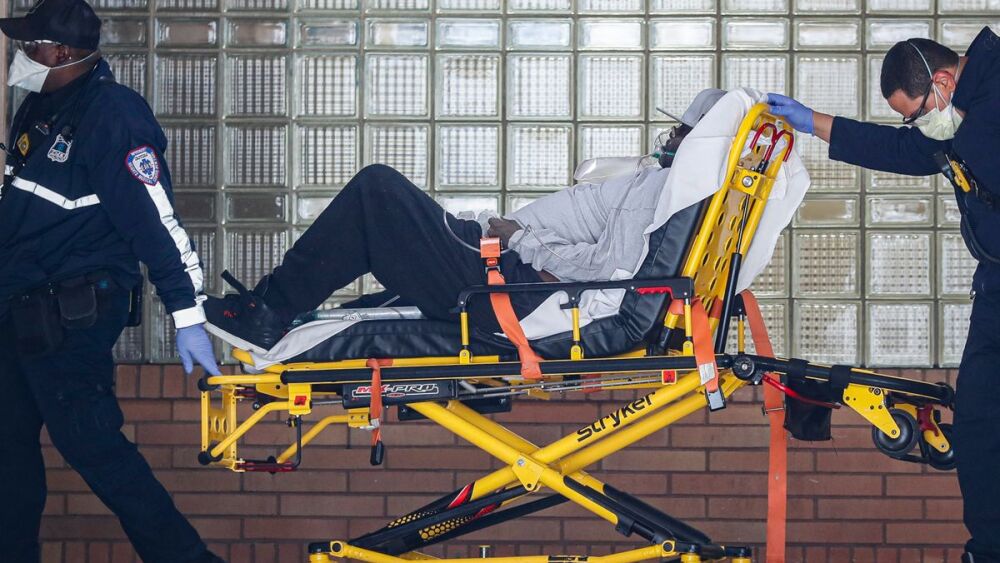I remember the first time someone told me, “I’ve got your back.” It was on a 911 call for a man having a full blown violent psychotic episode in a downtown Denver bar. We’d been told that he was a third-degree black belt in something and a Golden Gloves boxer who’d quit taking his medicine two weeks earlier. I was elected to try to talk him into a calm ride to the hospital, because everyone thought he’d respond better to a long-haired paramedic than a police officer. As I started to walk into the bar full of overturned tables, broken bottles and cowering patrons, an exceptionally muscular police officer whispered in my ear, “I’ve got your back.” It was the only comforting thing about being the point person.
A few decades ago, some EMS systems started reaching out to public health to see if we could work together. Those initial collaborations resulted in everything from EMS car seat checks and fire departments hiring social workers to community paramedics providing daily care for people with tuberculosis. With EMS Agenda 2050, we made a solid commitment to become a full partner for public health and its mission to “advance the health of all people and all communities.”
Our partners in public health are actively engaged in a monumental battle trying to stop the spread of COVID-19. For some reason, the healthcare-inspired use of masks to reduce the transmission of this virus has become political and a point of contention in communities across the U.S. Public health officials are receiving threats on social media like, “Hey public health officers you’re in our crosshairs.” Protests have been organized outside the homes of county health officers. According to the Health Officers Association of California, more than 10 county health officers have resigned since the start of the pandemic. GoFundMe accounts have been set up to cover the legal costs of people fighting mask orders.
Mask use is nothing new. In 1897, Johann Mikulicz, the head of surgery at a university hospital in Poland, started working with a bacteriologist whose experiments showed that respiratory droplets carried culturable bacteria. In response to this discovery, Mikulicz started to wear a face mask which he described as “a piece of gauze tied by two strings to the cap and sweeping ac,ross the face as to cover the nose and mouth and beard.” The strategy was to keep the germs away as opposed to killing them with chemicals, as Joseph Lister started doing in the late 1860s. Both principles, keeping the virus away and destroying it with soap and chemicals, remain key to preventing transmission.
Very few people would argue that surgeons and nurses should not use masks in the operating room. This is a basic hygiene practice that’s been in place since before anyone reading this article was born. The concept is simple. People are less likely to die if they don’t get infected. The desire to keep bacteria and virus from being passed from one person to another is reasonable. While the gap between what we know about COVID-19 and what we need to know is cavernous, we do know that “sharing air” with someone who is carrying the virus is a prevalent mode of transmission.
The recipe for sharing less air includes avoiding groups of people, especially in indoor spaces, staying at least a surfboard length away from others, and making sure that everyone uses a mask properly. This is exactly what our colleagues in public health are trying to get us to do.
For my entire career, many if not most people in EMS have felt under-appreciated by the rest of healthcare. Our colleagues in public health also have not received much appreciation over the years, even though they are working hard, crazy long hours trying to keep us all alive and virus-free. I think it’s time we stand up and support them. Here are a few ways to support public health:
- Of course, always use masks anytime you’re in public, on or off duty
- Show up in person to meetings where our public health colleagues are presenting to show them and the people attending that they are not alone
- Offer to participate in or stand next to public health colleagues at press conferences and meetings – there are few things more powerful than the image of a uniformed emergency services professional standing by your side to increase the power of a lifesaving message
- Repost public health warnings and notices on your EMS and fire department websites and social media pages
- Retweet messages posted by our colleagues like this one:
https://twitter.com/DHCS_CA/status/1279174104080240640
Public health officials are leading the battle for all of us. It’s important for them to know their EMS colleagues have their back. We are in this together.
Read next: Plague in the modern day: Public health outbreaks at home and away
By the way, if you’re looking for good science to back-up your advocacy of mask use, this resource from the American Association for the Advancement of Science’s “Science” magazine is the best I’ve seen.
1422.full by epraetorian on Scribd



